It’s not just the people that are different down under…as due to millions of years of isolation unique creatures have evolved! With no possibility for new types of animals to get to this breakaway landmass, 80% of these unusual animal inhabitants are found nowhere else in the world. They have evolved into animals most suitable for the Australian environment.
Some of the more dangerous animals like crocodiles, snakes and spiders are well known, but not everything that moves in Australia will kill you! The country is home to lots of fascinating species with weird and wonderful differences!
1. Thorny devil….. False head at the back of its neck
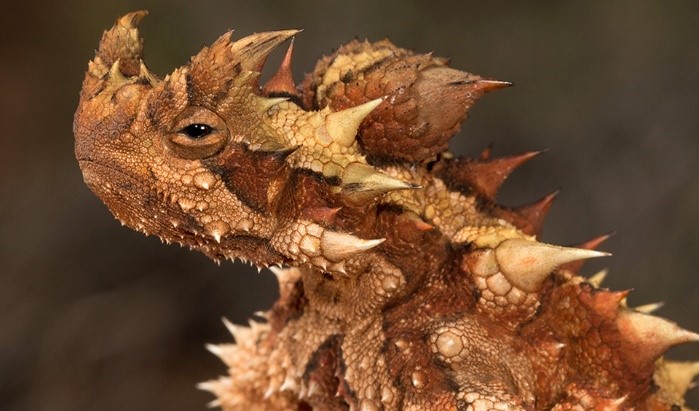
Thorny devils are weird looking with their densely-packed spikes all over their head and body!
Even weirder is their protruding false knob like lump on the back of their neck. When threatened they tuck their real head between their forelegs, the false head, along with spikes, looks like a second head and is used as a defence mechanism to warn off predators. These spikes are also used to gather water when rubbed against dew covered spinifex and grass, the moisture running along the grooves by capillary action and directly into their mouths. Another defence mechanism is to puff their chests with air to make themselves bigger and harder to swallow. They can also change colour to blend into their surroundings, appearing grey, orange, red or yellow. To confuse predators they have a jerky walk moving backwards and forwards, with frequent freezing to help conceal them if spotted in the open. No wonder they can live for up to 20 years!
They are almost completely inactive in the hottest and coldest months seeking refuge in underground burrows. they use their sticky tongues to capture thousands of small black ants a day and often sit and wait by ant trails, so that their prey walk right past them. Their faecal pellets crumble easily to unveil the exoskeletons of their ant prey.
2. Mistletoebird- wipe their bum on branches
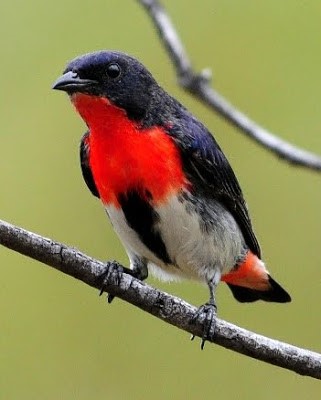
A lesser known native, the Misletoebird, has a weird and wonderful pre-poop dancing and bum wiping routine! This super gross, but ingenious behaviour disperses the seeds of the mistletoe plant high up in the trees.
These charming red breasted birds, eat Mistletoe berries then excrete faeces by twisting their body sideways and deliberately wipe their poop on the branch it is perched on! The Misltetoebird has no gizzard but a specialist pouch which grinds up food, meaning the fruit of the berries can be digested without the seeds being destroyed. The defecated seed is sticky, allowing the seed to stay put! Several seeds of the parasitic Mistletoe plant can be linked in a long glutinous thread, clinging to the branch while they wait to germinate on the host tree.
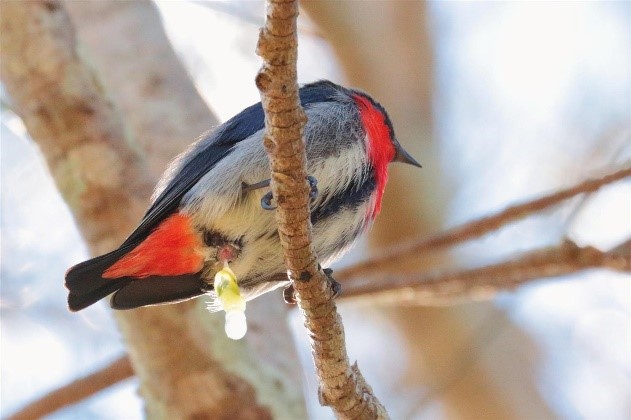
So different from most birds that find defecation a tidy affair because when they are sitting on a branch their poop naturally drops to the ground.
3. Marsupial mole- totally blind
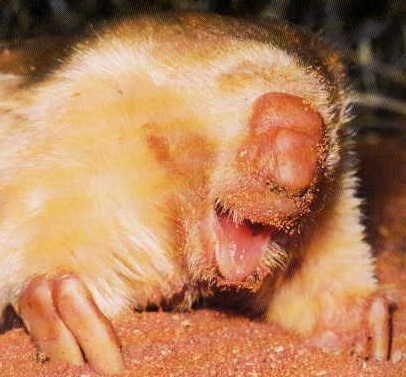
This ingeniously adapted desert-dwelling marsupial mole spends most of its life living underground! So no wonder as they have no eyes and are totally blind. They also have almost no ears and finding it difficult on the surface as they are extremely vulnerable to predators.
These small sausage like marsupial mole, measuring 12-15cm long, are small enough to fit on the palm of your hand! They are coated with glossy, creamy yellow fur and survive on air situated between grains of sand. They feed on small animals such as insects as well as small larvae, pupae and eggs. Their remarkable claws dig holes and sweep the sand, so as to backfill at the same time. This scoping and push action slowly propels the animal through the sand as if it is swimming, without creating a noticeable tunnel behind. They have a protective shield on their nose because it is used as a battering ram. Interestingly, the male stores its testes in a pouch as a result protecting it from harm while digging.
https://www.youtube.com/watch?v=p7uA3YaLPhE
4. Frilled Neck Lizard- runs as if on a bicycle
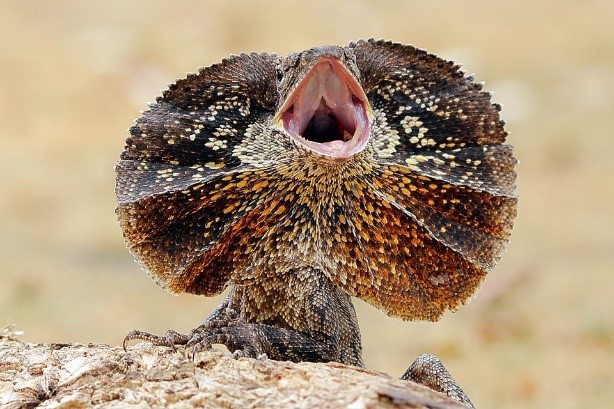
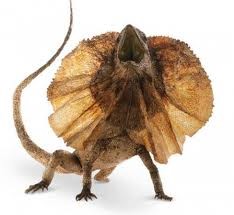
In full scare mode the Frilled Neck Lizard is a unique sight, as too is the entertainment from watching the lizard on the run! The Frilled Neck Lizard gets its name from the large flap of skin, which it can retract or extend around its neck and throat. When threatened the little lizard makes itself look scary by rising up on its hind legs and opening the frill around its neck! It then opens its gaping mouth and hisses, showing the long fangs for defending itself and eating prey. The point of the scare is to allow enough time for the lizard to make a hasty retreat. This in itself is a comical spectacle because when the lizard runs, it pumps its legs earning the name ‘bicycle lizard’
Frilled Necked Lizards can also change their colour, like the Thorny Devils, to blend into the environment. The flap of skin around their neck can also be exposed when mating or trying to eliminate excess heat. Frilled Neck Lizards are commonly kept as house pets and the popular children’s show Playschool has even made up a song and dance for children about this comical little lizard.
5. Platypus- first scientists thought they were a hoax!
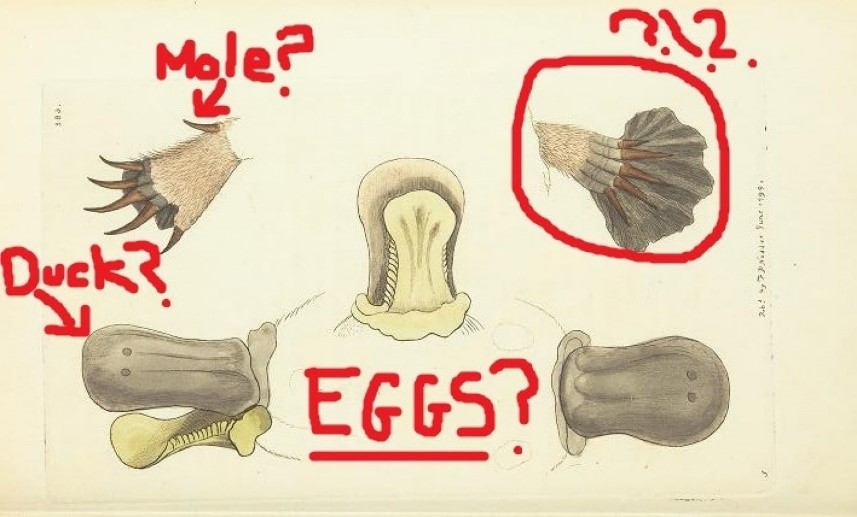
The Platypus is so unusual looking with its duck-like bill and a furry body that the first scientists to study a specimen sent back from native Australia, actually thought it was a hoax!
They thought the beak from a duck had been engrafted onto a body of a four footed animal. As one of the most unusual and strange looking animals in the world they have a flat bill and webbed feet like a duck, a tail like an beaver and a body like an otter. The flat bill is actually a sensory organ which has thousands of receptors on it allowing them to detect the prey such as shrimps or shell fish.
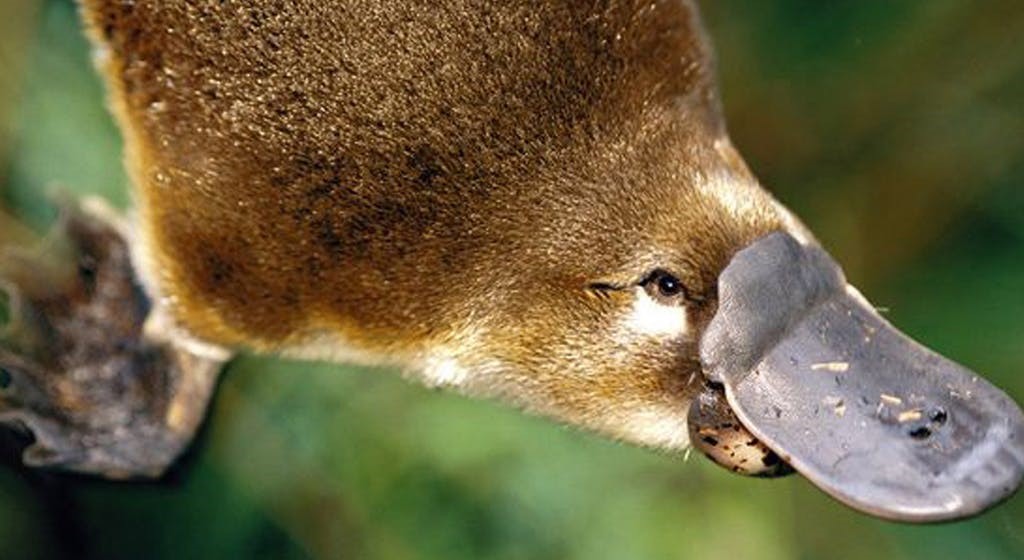
The adult male platypuses are dangerous because they have a venomous spur located on the inside of each of their hind legs. The venom is not lethal to humans but will cause a lot of pain. They have very thick waterproof fur and webbed feet which aid swimming and store food in their cheeks. They spend most of their day in a burrow but are most active early morning or late evening. They are able to stay underwater for a maximum of 10 minutes searching for their prey and even swim with their eyes shut relying on the sensors in their bill. The bill is also used by the male Platypus to store the eggs, yes they are only one of two mammals which lay eggs!
The baby Platypus are sometimes called Puggles as well as Platypup!
6. Echidna – four headed penis!
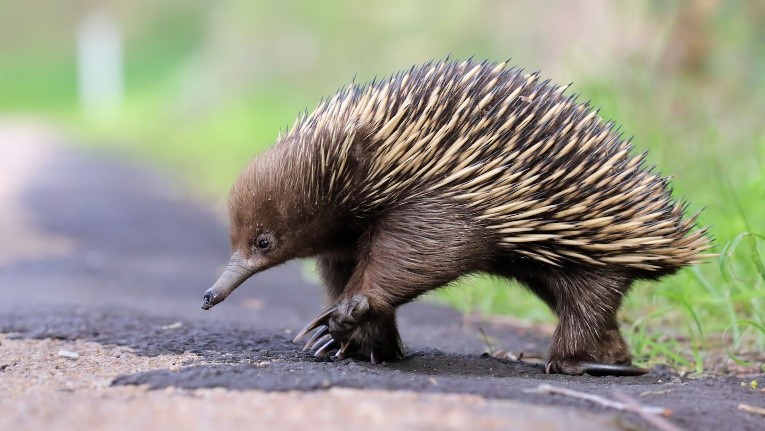
The Echidna has spines like a porcupine, a bird-like beak, a pouch like a kangaroo and lays eggs like a reptile. Also known as spiny anteaters they have a long nose and long sticky tongue to catch ants and termites, as well as a keen sense of smell. The strange mix of characteristics is why it is named after a creature in Greek mythology who was half woman and half snake. The species has remained unchanged since prehistoric times as they have found a means to survive when others have become extinct.
Male Echidnas have a four headed penis and during mating the heads of one side do not grow in size, but only two are used to release semen into the female’s two branched reproductive tract. Each time it copulates it alternates the two sets of heads!
The Echidna is the only other egg laying mammal besides the platypus and like the platypus their babies are called Puggles. They feed their young on milk but have no nipples, as the milk just oozes out of the skin in the pouch, allowing the baby echidna to lick it up. Once the baby Echidna produces spines the mother takes it out of the pouch and places it in a burrow in the ground.
Another surprising fact, is that the Echidna has an extra claw on its second toe, to groom its spines. Another super weird fact is that their toes point forward at the front and backward on their hind legs. Unusually they have a vertical slit behind each eye for ears. When sensing danger the echidnas will curl into a ball and expose their long spines in defence. No wonder they can live for up to 50 years and is Australia’s most widespread animal!
7. Sugar Glider – parachutes its descent
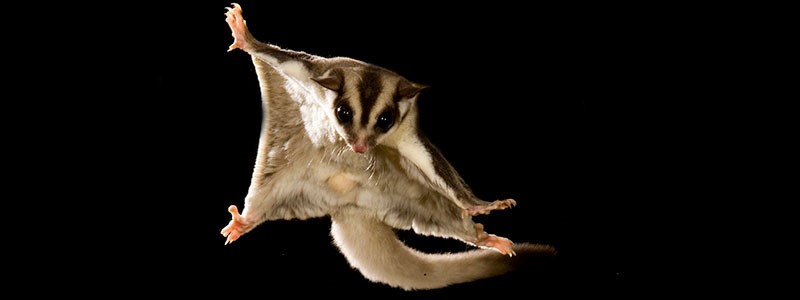
Sugar gliders are part of the Australian possum family. They are super cute with big soft eyes and are highly social animals with a sweet tooth! They have skin between their ankles and wrists that opens up to slow their descent, like a parachute, and enables them to glide up to 50 metres between trees. They use their bushy tails to steer and stabilise themselves as they launch themselves from the tree and spread their limbs. In the wild sugar gliders live in trees and rarely, if ever touch the ground.
In the day they sleep in nests in the hollows of old trees, then at night, they glide from tree to tree, enjoying a diet of invertebrates, nectar, pollen and sap gum. They have very sharp teeth which they use to bite into the trees. Like other marsupials the young, called joeys, are raised in their mother’s pouch only coming out when they are around 70 days old. After they leave the pouch the babies ride on their mother’s back.
https://www.youtube.com/watch?v=hGgzDQ49xWI
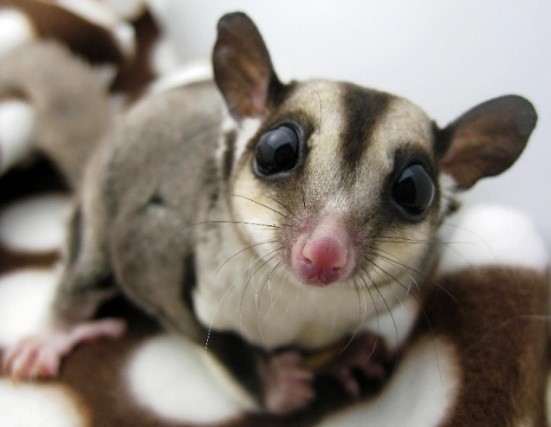
8. Quoll – they share toilet spaces
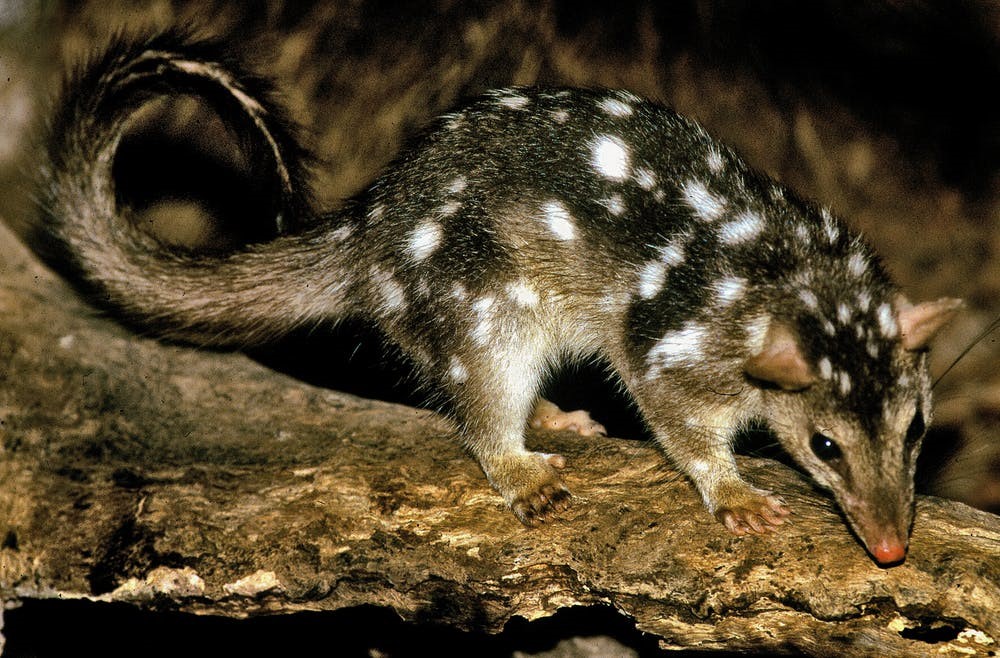
Quolls were often seen by early settlers who called them native cats or tiger cats but the word Quoll is derived from an aboriginal word from the Cooktown area, Ja-quoll.
Quolls are marsupials with bright eyes, a moist pink pointed nose, sharp teeth, a long tail and brown-black fur with distinctive white spots. There are four species of Quoll in Australia, the Northern, Eastern, Western and Spotted-tailed Quolls (Tiger Quoll). They eat plant seeds and fruits but as predators, they hunt mostly at night, for mammals such as birds, possums, frogs, insects and lizards. They eat carcasses of dead animals and sometimes scavenge around rubbish bins and campsites. As nocturnal animals they hunt at night but can be found basking in the sun instead of hiding in their dens, on sunnier days. The larger Spotted-tailed Quoll sleeps in caves or hollow logs, while smaller species live in underground burrows. An interesting feature of their behaviour is that they use shared toilet sites in open spaces such as rocks for marking their territory and other social behaviour.
https://www.youtube.com/watch?v=N_M23mYaoTo
Male Quolls travel far and wide during breeding season, with mating occurring during the winter. As marsupial mammals, their young are born tiny and undeveloped. They must work their way to the pouch, where they attach themselves to a teat to feed. Only the Spotted-tailed Quoll has a true pouch. In the other species, the young are protected by folds of skin around the teats. As the pups grow, they hang from the mother’s tummy until she carries them on her back.
9. Tree Kangaroo- agile in the treetops!
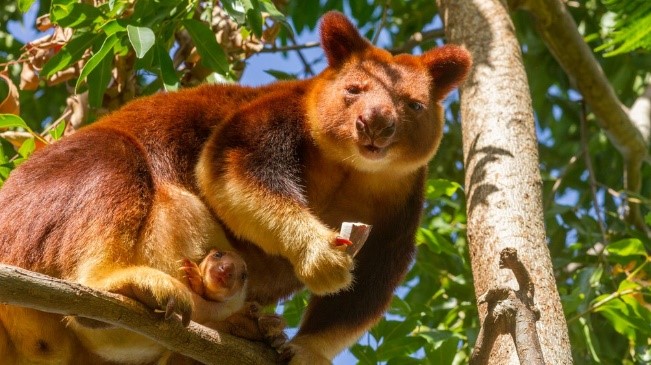
Different from the kangaroos we recognise in Australia, Tree Kangaroos are extremely agile in the treetops! Tree kangaroos have stronger, longer arms and shorter hind legs, compared to other kangaroos. Aided by the use of their four legs, they use their long tail as a muscular arm to move skilfully through the trees. The tail will wrap around the branch while it is stationary and will prevent it from falling. This evolution makes them unique and makes them the heaviest tree dwelling marsupial in the world. Their feet are shorter and broader too, as this allows the animal to grip rounder tree trunks and branches. The feet have rubbery soles which protect the animal from slipping. All the limbs have long sharp claws which are gently curved inwards, this gives the kangaroo a good grip while climbing trees. Tree kangaroos live at altitudes as high as six thousand feet and they can even leap up to 9 metres from tree to tree, jumping down to the ground from a height of 18metres without hurting themselves!
https://www.youtube.com/watch?v=UAsf1yw_DAg
The Tree kangaroo has soft reddish-brown fur with golden fur on its face, limbs and underbelly and two stripes that run from its tail up its back. Their colour is a similar shade to the leaves and branches of the trees they dwell in, offering camouflage from predators. Their natural enemies being pythons and wild dogs. The diet of a tree kangaroo is leaves, fruits, fresh shoots bark, eggs and small birds.
The Tree Kangaroo gives birth to a poorly developed baby called a joey. The baby crawls towards the pouch on the mother’s body where it finds milk in its mother’s nipple allowing it to develop. An eight month old joey is ready to jump out of the pouch and returns to sleep and eat until it becomes too big! There are twelve species of tree kangaroo. All species of tree kangaroo are listed as endangered due to the accelerated deforestation and illegal hunt of them for their meat and fur.
The Tree Kangaroo is hunted for their fur body parts and meat, so with deforestation as well, the populations are dwindling drastically!
10. Quokka – the worlds happiest animal
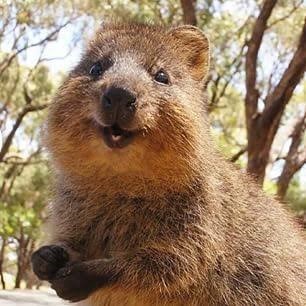
This wild Australian animal is taking the social media by storm! Their happy looking grin on their faces and the chance to get a selfie with them is epidemic if you see one! The best chance is on Rottnest Island located off Perth, Western Australia, where they are native
The Quokka looks like a rodent but they are wallabies with absolutely no fear of humans. These adorable animals are curious creatures and will often, approach humans in an unthreatening way leading to the Quokka selfie trend.
https://www.youtube.com/watch?v=YounWsOmud8
Quokkas are not territorial and happy to share a space with each other. Over a hundred individuals can overlap on a single piece of land. They are very social animals and can play with each other in fearless antics. Their playfulness is extended to interaction when around humans, but this is just a clever deception as they have learned what makes us happy, happy enough to give them food! Quokkas have consequently set up colonies near homes, hotels and tourist sites!
Babies are born just one month after mating and then spend 6 months in their mother’s pouch. Yet the more disturbing fact is that when threatened they pull out their joeys from their pouches and throw them on the ground where they squeal. The crying sound attracts predators who eat the babies, giving their mothers time for a quick get away!
Quokkas eat mainly leaves and grasses but when quokkas eat that vegetarian diet they do not chew their food but swallow it whole. They then regurgitate the un-chewed food and eat it for a second time so that the body can get more nutrients out of the more processed food.
